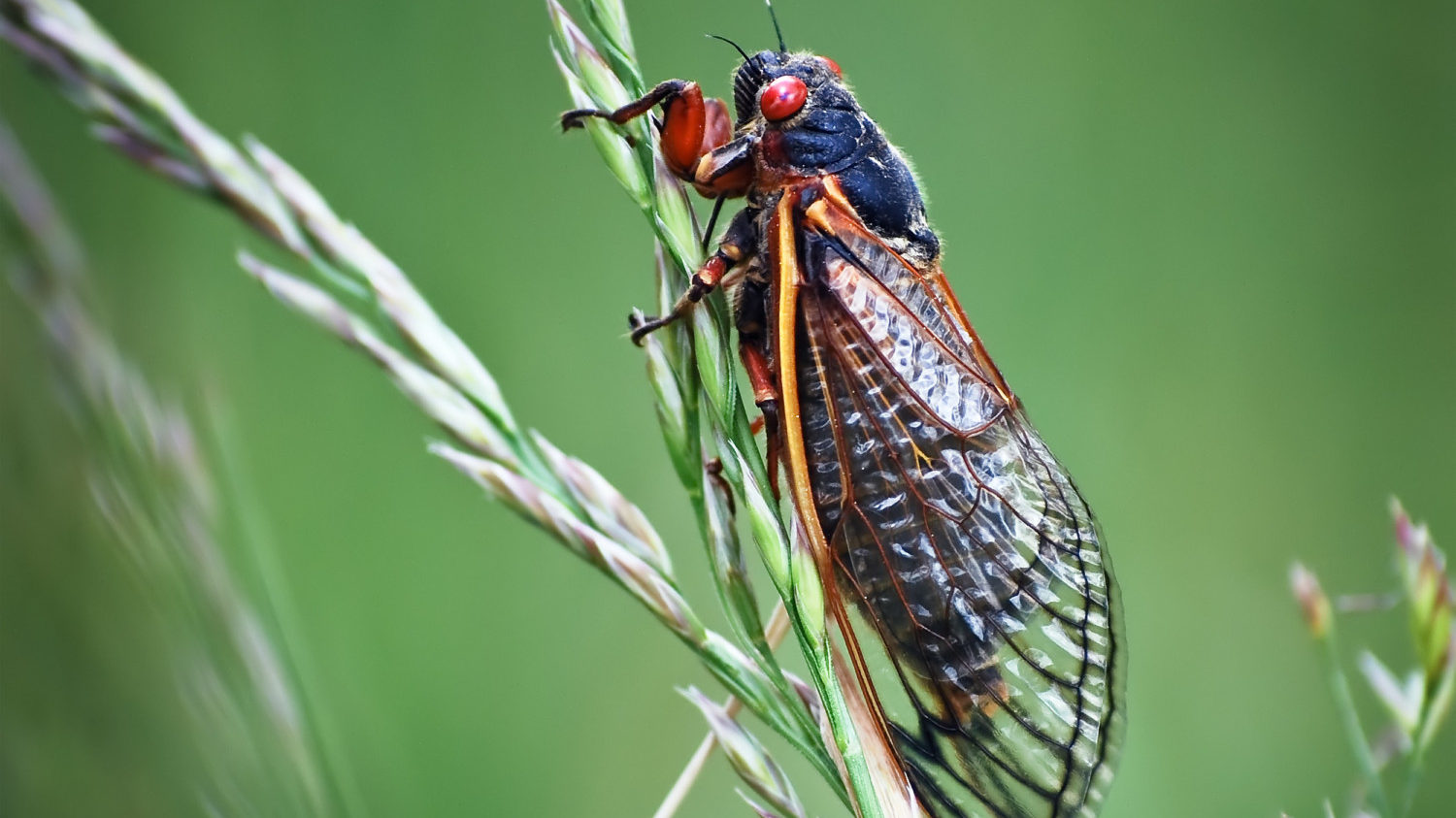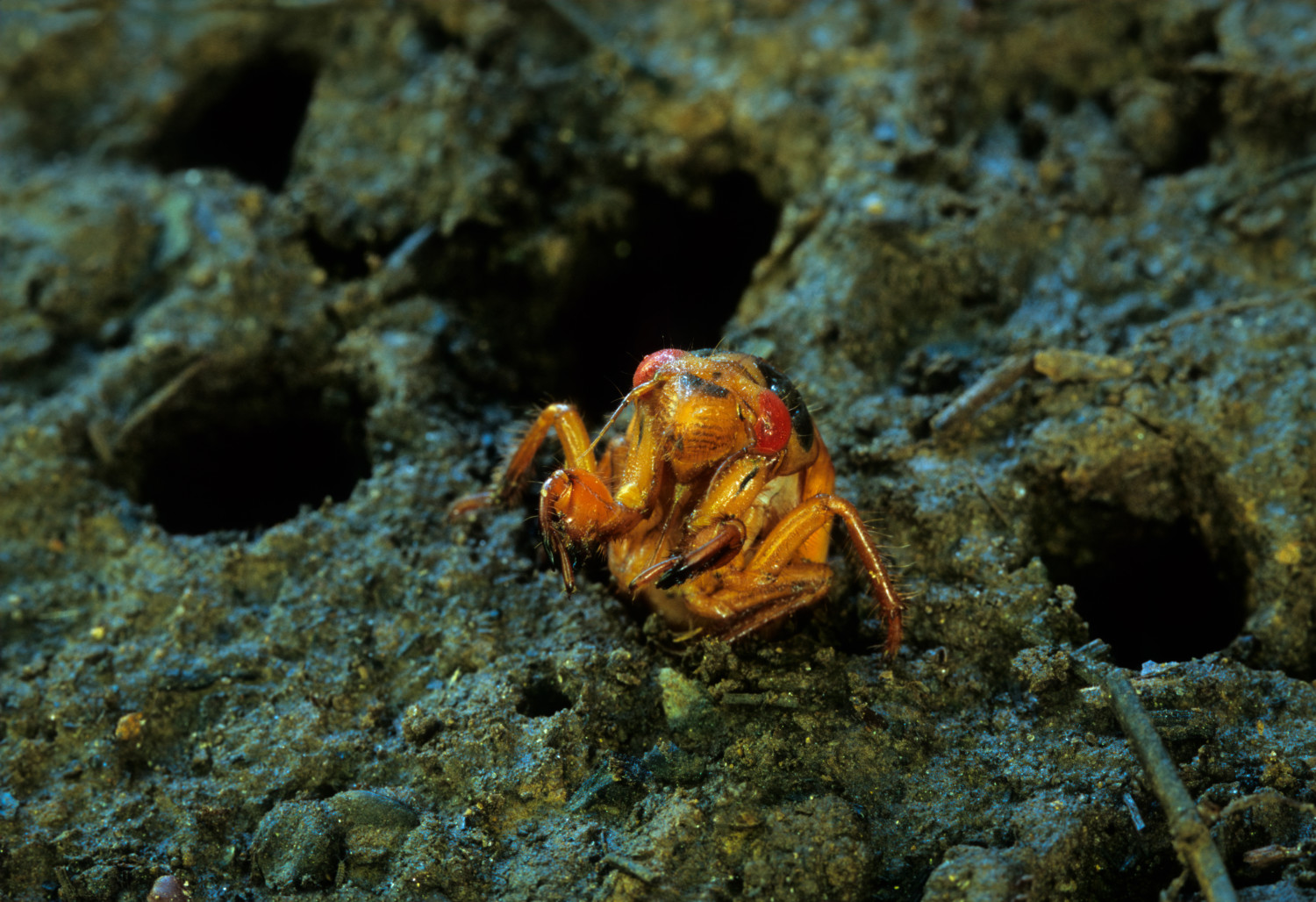Billions of cicadas are emerging in these states

- February 17, 2021 |Last updated on 05/20/2021
The arrival of warm weather this year has begun to awaken more than just the flowers and trees. In fact, beneath the ground in more than a quarter of the country, billions of sleeping creatures are lying in wait to rise out of the earth and take to the skies.
This may sound like the plot for an outrageous horror movies, but it’s very real, and residents of 15 states are not looking forward to the arrival of the Brood X cicadas.
While that name makes this group sound like some kind of intimidating biker gang, groups of cicadas are labeled with Roman numerals. The cicada group that’s emerging in 2021, known as Brood X (or Brood 10), was last seen 17 years ago, in 2004.
After spending 17 years underground, the mature nymphs of the periodic cicada burrow up out of the ground before climbing onto a tree trunk or other object to begin metamorphosing into an adult. (Note: The nymph below was placed into an opening to simulate emergence.)
In nature’s version of what looks like an episode of “The Walking Dead,” Brood cicadas stay underground for either 13 or 17 years. During that time, these insects eat tree root sap and begin their growth process. At the end of their dormancy, they crawl out of the ground, shed their skin, and fly off to find a mate.
Actually, it’s the males who fly up into the trees to find their mating partner — and they make quite a ruckus of the whole affair. The male cicadas gather together at the tops of the trees and vibrate parts of their bodies called tymbals to make a sound to attract the females. These little guys can put out a loud sound, though. A group of male Brood cicadas can make hums reaching up to 100 decibels, which is as loud as some lawnmowers.
Which Places Will Get Cicadas This Year?
If you live in one of the following 15 states (plus Washington, D.C.), you can expect to see and hear swarms of Brood X cicadas somewhere in your area:
- Delaware
- Georgia
- Illinois
- Indiana
- Kentucky
- Maryland
- Michigan
- North Carolina
- New Jersey
- New York
- Ohio
- Pennsylvania
- Tennessee
- Virginia
- West Virginia
- Washington, D.C.
Entomologists at Virginia Tech said the largest cicada clusters will likely be seen in southwest Virginia, parts of North Carolina and West Virginia, where 1.5 million cicadas could emerging per acre. People in Maryland started spotting them in mid-May and posting about the creatures on social media — which is a first for Brood X, since when they last appeared in 2004, Twitter and Instagram didn’t even exist yet!
The good news about this winged invasion is that cicadas, while loud, are harmless to people, pets and most vegetation. The noise the cicadas make is a nuisance, as are the vast numbers of them flying around, as well as the molted exoskeletons they leave behind after they crawl out of the ground.
Another bit of good news is about the cicada invasion is that it’s short-lived. The entire mating cycle lasts just a few weeks. The adult cicadas will mate with the females, who will lay their eggs in the trees. Then, the hatchlings will fall down underground and stay there until their next 17-year cycle arrives in 2038.
For the record, the next cicada groups scheduled to make an appearance are Brood XIII (17-year cicadas) and Brood XIX (13-year-cicadas). Those will show up primarily in Illinois, Wisconsin and other Midwestern states in 2024.



